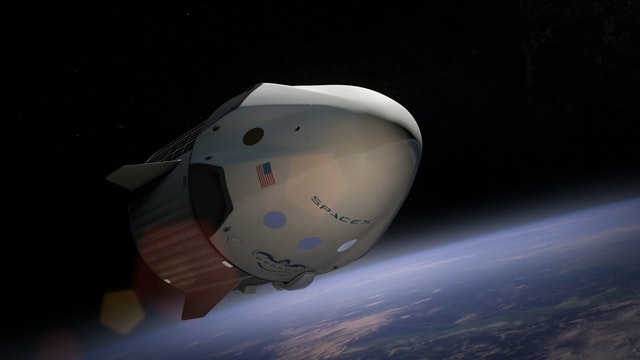The launch of SpaceX’s Dragon Crew Launch in May 2020 not only marked the first time that a private company sent humans to space, but it also heralds an era that is starting to take shape: the space-for-space economy, a system of goods and services designed to supply space-bound consumers. Mining the Moon for resources is a great example of the space-for-space economy.
As is apparent today, the beginning of this economy entails private companies selling services to NASA and other government agencies since these organizations are the only source of in-space demand. However, SpaceX, Virgin Galactic, and other NewSpace companies have proved that they have both the dedication and the ability to send people to space.
Once citizens can fly to the final frontier, the NewSpace sector will be positioned to supply the demand, developing a market that could overpower the government-led industries — and even Earth’s global economy. All we have to do is grasp the opportunity.
The First Stages of the Space-for-Space Economy
In the 1970s, NASA research predicted the prosperity of a space-based economy that would supply demands for hundreds and even up to millions of humans to live in space. They asserted how it could dwarf a space-for-Earth economy and realized this economy would change the way we do business, govern people and live our lives. While we still haven’t had more than 13 people in space at one time, we are finally reaching the first stage of the space-for-space economy with the advent of SpaceX’s success and the emergence of BlueOrigin and Virgin Galactic. This model will send private citizens to space as passengers, tourists, and — eventually — settlers on places like the Moon. It will pave the way for businesses to create a robust economy of goods and services for these people over the next several decades.
The Commercial Space Age
Recent research in the Journal of Economic Perspectives found that the model of government-led human space activity over the past 20 years has paved the way for a new model that fosters public space projects with private companies. In this estimate, centralized government space programs will eventually focus on space-for-Earth activities that are best for public interest, like science and national security. The natural transition is expected as the justification for expenditures of these space programs must demonstrate benefits for society.
In contrast, the vision driving private space companies like SpaceX is to capture the supply markets. Elon Musk and his behemoth company secured 60 percent of the global commercial launch market and is building larger spacecraft to ferry passengers to the ISS and to Mars. Today’s space-for-space market is limited to supplying the handful of NASA and other government astronauts in space. SpaceX’s revolutionary vision of supporting a high number of private space explorers, their current activities have been in response to government customers like NASA. But as launch costs decrease, NewSpace companies like SpaceX can help more tourists and settlers, instead of only government employees, into space. In this regard, it proves that a space-for-space economy can be a vast and sustainable industry.
Growth Opportunities for the Space-to-Space Economy:
The opportunity for a burgeoning space-to-space economy is promising, but it could be missed if policymakers don’t provide institutional and regulatory frameworks that support these goals. Experts have mentioned three specific areas of policy that will be important to foster a space economy driven private-sector.
Government Regulation and Support:
Building stability for this type of space sector depends on government regulation and support. Recently, NASA and the U.S. Commerce and State Departments have committed to creating a regulatory environment in low-Earth orbit which will enable U.S. commercial activities to grow. It’s a good sign that we’re on the path to collaboration, but the government needs to clarify property rights over space resources like orbital slots and ice on the Moon. Indications of the government’s willingness to establish a set of regulations that support space’s economic development have been evidenced by the 2015 Commercial Space Launch Competitiveness Act. While too much regulation could be stifling, some policies like reducing space debris would lower costs and ensure better organization and cooperation amongst space businesses.
Support Risk-Taking for Private Individuals: Some have argued that the government should support risk-taking for private individuals who fly to space. While ensuring high safety levels, new policies could allow private space settlers and tourists to voluntarily take on more risks than astronauts. It could allow spacefarers that are supported by private companies to maintain progress in the early years of exploration. An example of the benefits of this approach is similar to when NASA switched from cost-plus contracts to fixed-price contracts where private companies shared risk with NASA and it helped to stimulate growth in the NewSpace market.
Geopolitical rivalries: It’s essential for the space-for-space economy not to be diminished by geopolitical rivalries. Conflicts are inevitable, but relations need to be maintained. Otherwise, they will create risks that slow private investment and take up resources. Private economic activity on Earth has helped people come together when states are at odds. The space-for-space economy can also potentially be a force for unity, but it’s up to the global government not to quell those geopolitical rivalries. A collaborative approach focused on diversity should be the approach to enforcing laws in space and it will be essential to ensure a robust space-for-space sector.






